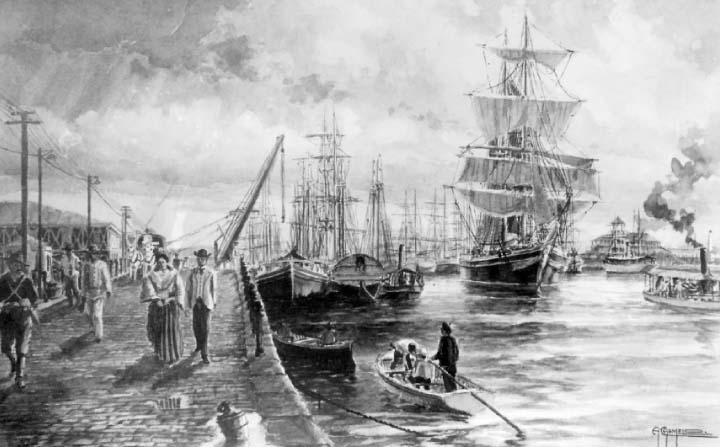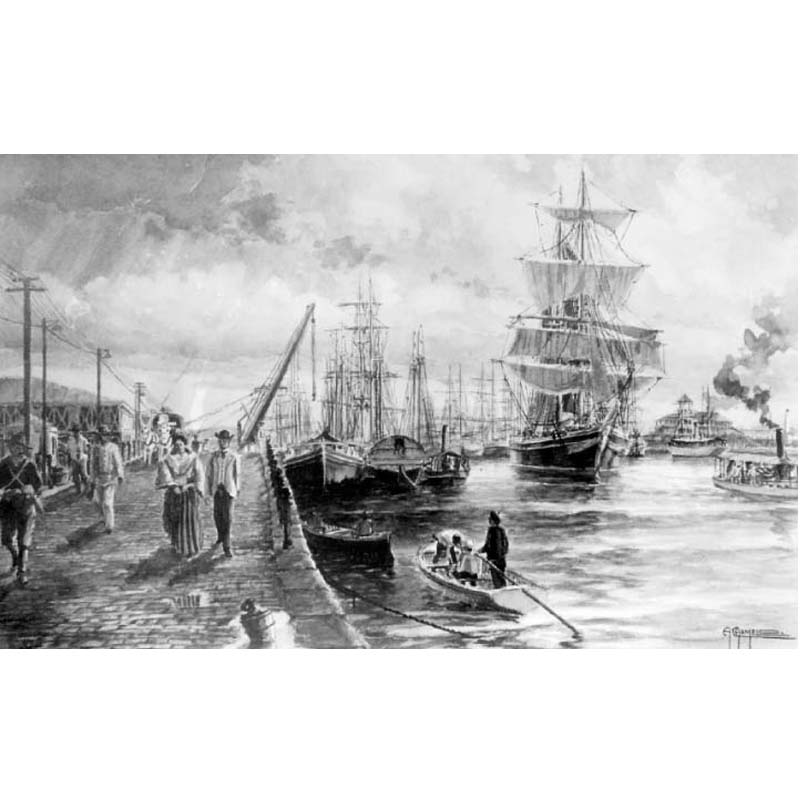Silver played a big role in the Galleon Trade between Manila and Acapulco, Mexico that lasted 250 years, from 1565 to 1815.
The silver from Mexico and Peru not only sustained the Philippines’ economy through the Galleon Trade, but encouraged the trading of Chinese goods, mainly silk and porcelain.
Silver was in great demand during China’s Ming (1368-1644) and Qing (1644-1911) dynasties – it was used as currency as well as to sustain its government finance. Mexico, on the other hand, had a big demand for Chinese goods but had no goods to trade with China except for its silver.
Manila served as the midway transport between China and Mexico in the Galleon Trade. Thanks to Mexican silver, trade between China, mainly Fujian, and Manila increased in great volume.
As in China and Mexico, silver played a big role in the Philippines during the Galleon Trade when it was still Spain’s colony. But its role would persist well into the early American rule in the Philippines, even creating trouble, in the economy in general and its finance, especially its monetary system, in particular.

Peter W. Stanley describes the conundrum in Chapter 4 of his book, A Nation in the Making: The Philippines and the United States, 1899-1921. Published in 1974, this unique book is the first modern multi-archival study of American-Philippine encounter in its formative years.
Stanley wrote that China’s increasing demand for Mexican silver and a sudden increase in its use in the Philippines, due to the needs of the US Army, increased the value of silver relative to gold. Banks began to exchange US gold dollars at $1.98 Mexican. Panic and speculation drove the price even lower, until the value of US dollars amounted to only $1.50 Mexican.
The military government, in an attempt to bolster confidence, began accepting US currency to pay for taxes and customs duties. It reached an agreement with the Hong Kong and Shanghai and Chartered banks to reimburse them in Mexican silver, and the Commission ordered the civil service to be paid in US currency. But these measures failed to work, as the banks only accepted Mexican silver. Furthermore, they used silver only for exports to China for profit.
“It is apparent,” the Commission wrote in its first report, that “as long as the principal currency of the islands is Mexican money, the exchange ratio between this currency and US money will be subject to constant fluctuations, not only because the market value of silver changes, but also because demand for Mexican dollars may increase or decrease in the Chinese markets.”
To solve this problem, the Commission tried to use the Japanese model, which recommended the creation of a US-Filipino gold peso as the standard of value, as well as the circulation of a silver peso with marginally less silver than in the Mexican dollar. The coin can only be used for domestic transactions because of its convertibility to gold. Foreign trade would then be conducted in gold.
Though initially confident, the Commission’s view quickly changed, and it believed that only authorization from the US Congress and support from the US Treasury would make the new currency workable.
Two American experts, Charles A. Conant, a prominent New York banker and advocate of an Asian empire and Asian trade, and Jeremiah W. Jenks, an authority on economic conditions in British and Dutch colonies in Asia, refined the concept of a dual peso. Based on their plan, President Taft secured currency legislation.
The scheme failed and conditions in the Philippines worsened. By autumn 1902, Taft determined that there could be no compromise. “A large majority of business transactions between these islands and the rest of the world is in gold, and with fluctuations in silver, merchants never can know the price they are able to sell their goods in silver. They mark up their prices to the highest rate possible, increasing the living expenses of the poor of these islands,” he wrote.
Existing conditions also failed to attract investors. Representatives of English, Spanish and American banks of Manila, the merchant’s association, and the Manila Chamber of Commerce decided to support the campaign for a gold standard and a 2:1 ratio, and petitioned Congress to that end. At the same time, Conant warned that with silver bullion declining in price, another year’s delay in establishing the Philippine currency would be harmful to their interests.
By March 2, 1903, a dual system was finally established and an elaborate dual reserve fund was simultaneously created. Though cumbersome and difficult to establish, the system worked, and for the first time in decades, the islands had a stable currency with a predictable value.
The “currency war” played and led by silver during the early American period brought a big headache to the American colonizers, and it was the first-ever economic crisis that happened in Philippine history.
That silver!
